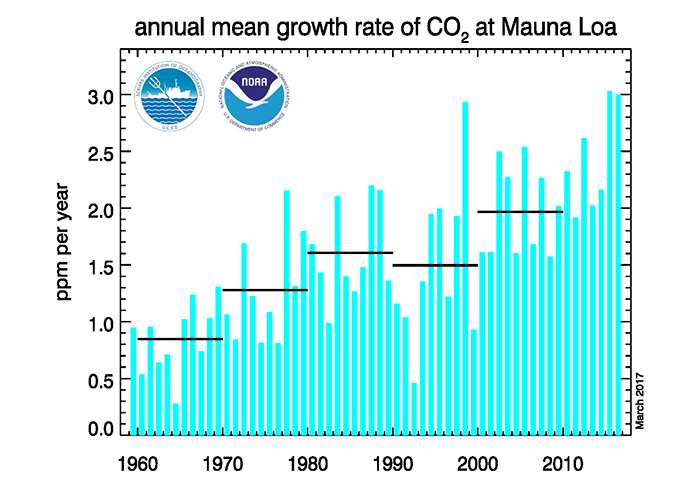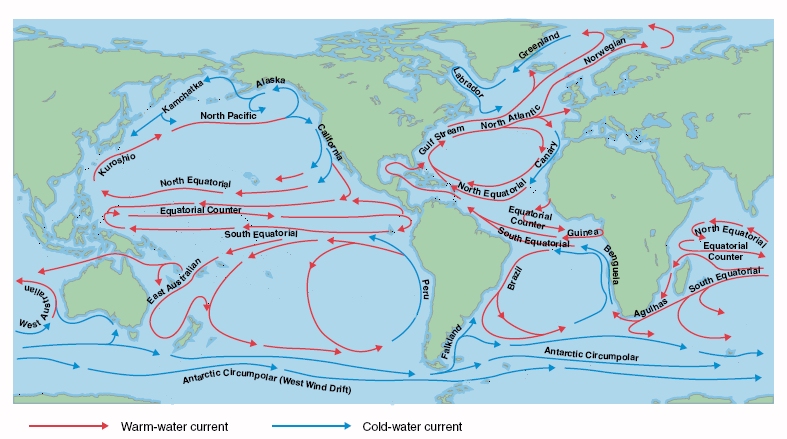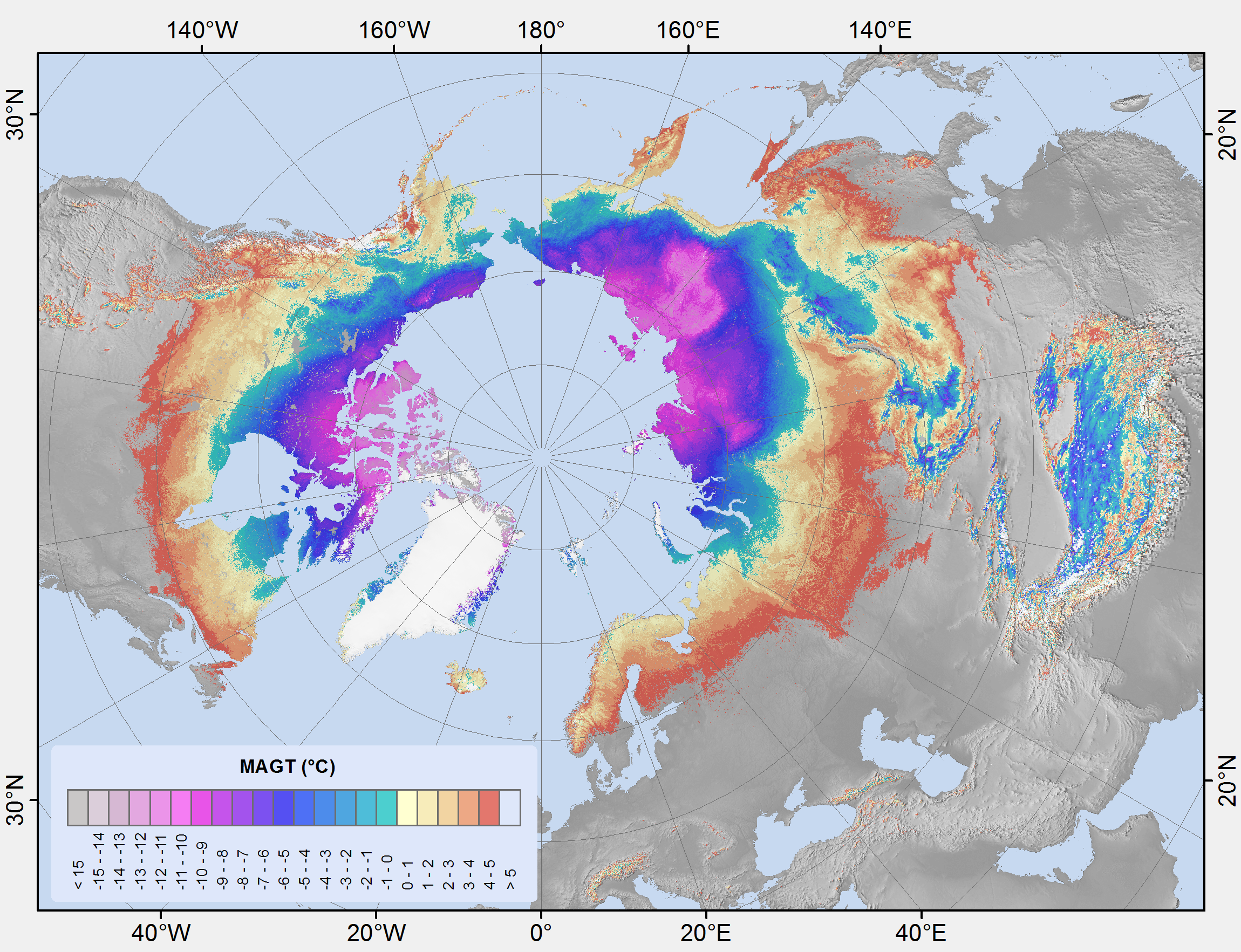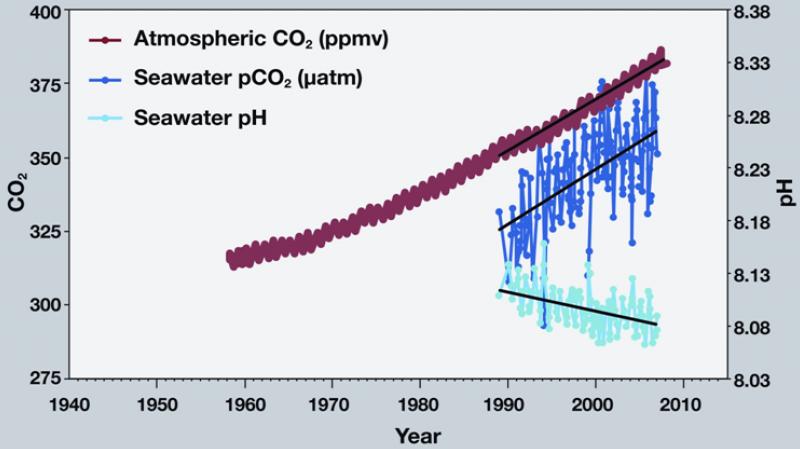The Bad News About Global Climate Change
1.0 Unless We Act Soon, Human Civilization Will Collapse in the Next 100 Years
Many human civilization have collapsed into chaos or simply disappeared in the past. Our civilization is not immune to that possibility. Nothing lasts forever. If it is hard to imagine the total collapse of our modern civilization, we have many books and movies that have this as the basic premise and try to present a vision of a post apocalyptic world, usually after a global plague or an atomic war. Our future may well hold an atomic war but propbably not between global supper powers. But even assuming that we can avert nuclear Armageddon, unless we act to halt global climate change, and act very soon, our civilization's days are numbered and very likely so are mankind's. Global Climate Change threatens our very existence as a species.
"Humans have the dubious honor of being the earth’s first sentient beings to have thoroughly documented their own demise while arguing with each other over whose fault it is.", Posted by xraymike79 in https://collapseofindustrialcivilization.com
And for those who worry about our economy, I think you will find that human extinction will be very bad for business.
2.0 The Rate of Increase in Atmospheric CO2 is Increasing
Figure 1 below shows the annual increase in the concentration of CO2 in the atmosphere.
 Figure 1 - Annual Growth Rate of CO2
Figure 1 - Annual Growth Rate of CO2
The black bars show the average rate of increase for each decade since 1960. It is pretty obvious that the annual rate of increase is itself increasing right up to 2016. Whatever was done to reduce the rate of greenhouse gas emissions has not made a noticeable difference to this trend. The last decade in which the average rate of increase declined was in the 1990's when oil prices shot up due to the Iraqi invasion of Kuwait on August 2, 1990 and the subsequent American invasion of Iraq.
As the great American philosopher and comic strip character, Pogo, once observed, "Man does not read the hand writing on the wall until his back is up against it." So it would appear in the case of man-made global climate change.
3.0 Positive Feedback
Positive feedback is a mechanism that amplifies an action. Consider a ball sitting on the top of a hill. If we push the ball even just a little, it will start to roll down the hill. A small action on our part results in a large action by the system, one that we may not be able to control.
Global Climate Change offers several positive feedback mechanisms, some of which will likely lead to runaway global warming if we push them hard enough.
Once the feedback mechanisms reach a point where, on their own, they are releasing enough greenhouse gasses into the atmosphere that the atmospheric concentration increases even if humanity makes no contribution whatever, then all is lost. The system will be out of our control and we will become a page in the history of the earth, just like the dinosaurs.
Absent concerted action by the governments of the earth, this scenario could play out in the lifetime of children already alive today. Our children and grand children could easily be the last generations of human beings on earth.
So what are these feedback mechanisms?
Melting Ice
Our planet has polar ice caps that contain billions of tons of ice, some floating on the ocean and some on land. These vast areas of ice are highly reflective and send about 90% of the incoming solar radiation back into space. But as we warm the planet, large portions of these ice caps, as well as glaciers in mountainous areas, are melting. As they melt, they uncover open ocean and land areas that do not reflect most of the incoming solar radiation, but absorb it and re-radiate it in the infrared bands. This results in a net increase in the amount of energy that is absorbed by the earths systems and causes more warming. Added warming causes more rapid melting and so on.
The ice in the polar ice caps is fresh water and the rapid addition of a large amount of fresh water to the arctic and Antarctic oceans may have a slowing effect on the major ocean currents such as the Gulf Stream and the Japanese Current, which are both part of the same system of currents that circle the globe as shown in Figure 2 below. These currents rely on heavy salt water that is cooled to +4 C sinking to depth to drive them. If the cold, dense, salty water is replaced with less dense fresh melt water from the polar caps, the ocean currents will slow and perhaps even stop, depriving the deep ocean of oxygen. (see Canfield Oceans below)

Changes to ocean currents would be problematic because of changes to the climate of large regions of the earth. But the real shorter term threat is the rise in sea levels that will result from the melting of the polar ice caps. Rising water will flood large areas of farmland, submerge many large coastal cities and cause some countries to entirely disappear. This is happening now.
Melting Permafrost and the Methane Menace
Large areas of the earth's land mass is permanently frozen, although the amount has been slowly shrinking in recent years. These areas are called "permafrost". Figure 3 below shows the extent of permafrost in the northern hemisphere.

Since by definition, permafrost never thaws, or hasn't thawed for upwards of 10,000 years, everything that grew in these areas and died is still there, preserved in the frozen ground. In some areas, the layer of preserved plant material is tens of feet thick and if it thaws, it will decay producing huge amounts of methane gas. In some areas where there are ponds that used to freeze to the bottom but don't any longer, methane gas produced by rotting organic matter collects under the ice in winter and can be ignited when released. In summer, these ponds can be seen bubbling out methane. If large areas of the north are allowed to thaw, millions of tons of methane will be released.
Methane is a greenhouse gas but there is currently very little in the atmosphere. When released into the air, it starts to oxidize into CO2 and water, so it stays in the atmosphere for a much shorter time than CO2. However, methane absorbs infrared radiation in a band that is not absorbed by other gases, so it has an effect on global warming out of proportion to its concentration relative to CO2.
Methane from another source is a potential danger if the ocean temperatures are allowed to rise. All along the continental shelf, deposits of Methane Hydrate (also called Methane Clathrate) have formed over centuries from the decomposition of organic matter that has settled on the ocean floor. As it decomposed, the organic matter released methane which, rather than bubbling to the surface, formed an ice like material in combination with water. This material is stable at high pressures and low temperatures, but if it is warmed or if the pressure is released, it rapidly decomposes into methane gas and water. There is so much of this material on the ocean floor that some companies have tried to develop methods of mining it. If the ocean temperatures rise, a lot of this material will decompose and the methane will enter the atmosphere, causing further warming.
Methane Hydrate releases are only thought to be a danger in relatively shallow water on continental shelves. Water is most dense at +4 C and that is the temperature at the bottom of the ocean in most places. But where the water is shallow, rising ocean temperatures could result in much higher temperatures at the bottom, promoting the release of methane from hydrates.
Water Vapor
The most effective greenhouse gas is water vapor. Fortunately for us, water exists in all three phases at temperatures common on the earth. Water taken up as vapor often falls as rain or snow or forms into highly reflective clouds of water droplets or ice particles. If this were not the case, the atmosphere would be saturated with water vapor and the earth would be far warmer than it is. But warm air is capable of carrying more water vapor than cool air and as the atmosphere warms, it will certainly hold more water vapor in total, thus increasing the greenhouse affect which will result in further warming. This mechanism actually provides more of the greenhouse affect than CO2 but increasing CO2 causes positive feedback through increases in atmospheric water vapor.
4.0 Water Wars
As the earth warms, glaciers melt. In some places, glaciers have disappeared and in others they are at risk of disappearing. When the glaciers that feed important rivers disappear, the rivers will become seasonal and will provide less water to the people living close to it. In some cases, rivers arise in one country and flow through another. If the river ceases to provide sufficient water for the people of both countries, conflicts over the water are likely. When the two countries are armed with nuclear weapons, things can get very bad very fast. This is the fear for India and Pakistan.
There are six rivers which form the Indus River System that flow from India to Pakistan. A treaty divides the water from these rivers between the two countries. The fear is that given widespread famine due to global warming, one of these countries may break the treaty and provoke a nuclear war between India and Pakistan. This scenario is described in Gwynne Dyer's book, "Climate Wars".
It is a very sad commentary on the intelligence of our species, but it is very possible that a nuclear war may be the only thing that will prevent us from causing our own extinction by thrusting us back into the stone age.
5.0 Desertification
The band of land straddling the equator is lush rain forest, but on either side of this band there is a band of land that is desert. North Africa and South Africa, the southern USA and Mexico and Argentina, northern China and Australia, all contain large desert areas, in each case separated by the equitorial rain forests.
As the earth warms, the land will warm more than the oceans. The temperatures in places that are already warm will soar.
As the earth gets warmer, these areas of desert will expand, at least in those parts that are not under water. Crops will fail and people will start to migrate. The refugee problems we see today will be dwarfed by the movement of people seeking food and water. Countries will fail and descend into collections of feudal fiefdoms. Infrastructure will deteriorate and fail. People will starve.
This is not some distopian fiction or something that may happen centuries in the future. It is something that is already starting to happen and that will hit full stride in the lifetime of people living today - our children.
6.0 The Oceans
Seventy one percent of the earths surface is ocean. Ninety four percent (94%) of visible light incident on the ocean penetrates into the water and is absorbed, warming the water. Unlike sunlight incident on land, sunlight incident on water is not absorbed at the surface, but is absorbed by a surface layer, the thinkness of which depends on the clarity of the water. Energy absorbed below the surface is not going to be re-radiated into space. The temperature rise in the oceans will be less than that observed on land but the ocean currents will carry the added energy to the depths. Since the oceans cover so much of the planet, they have moderated the temperature rise that has occured so far. But warming the oceans has consequences.
Previously, the oceans were in a state of thermal equilibrium with the environment. Today the oceans are warming because more of the energy radiated by the warming oceans is radiated back because the air above the water is also warmer and because the area of the oceans is getting larger due to sea level rise and melting of the polar ice caps.
Higher temperatures cause faster melting that results in higher temperatures and so on.
This is happening today. The affect so far has been moderate but if it is allowed to continue, is will become large.
Ocean Acidification
As CO2 is absorbed by the oceans, the pH of ocean water declines. CO2 desolved in water forms carbonic acid. Ocean water is slightly basic with a historical pH of 8.2 (7.0 is neutral). Today the ocean's pH is 8.1.
pH is a log scale (pH = -log(concentration of hyrdrogen ions) so the 0.1 change in alcalinity represents a 25% increase in the acidity of the oceans.

Changes in the ocean pH affect the ability of plankton, corals, and shell fish to form shells and attache themselves to objects. Since plankton are the base of the ocean food chain, and large changes in pH will dramatically reduce their numbers, acidification of the oceans is reducing the food supply for fish. The ocean's ability to continue to provide food for human consumption is at risk.
In addition, it is thought that with the reduction in the populations of competetors and predators, jelly fish may become the dominant species in parts of the ocean. Japan is already experiencing problems with fishermen catching huge numbers of large jelly fish, to the extent that some fishermen are going out of business.
"If we continue to add carbon dioxide at current rates, seawater pH may drop another 120 percent by the end of this century, to 7.8 or 7.7, creating an ocean more acidic than any seen for the past 20 million years or more." Smithonian (https://ocean.si.edu/ocean-life/invertebrates/ocean-acidification)
Reductions in Ocean Oxygen
In addition to being the base of the food chain in the oceans, planton, which are photosynthesising plants, generate roughly 50% of the oxygen that all animal life, including people, need to survive. Reducing the ocean pH will reduce the productivity of the oceans and reduce not just the food source for marine animals but the amount of oxygen produced annually by the oceans.
7.0 Canfield Oceans
8.0 Failing CO2 Sinks
Tropical Rain Forests
As the earth warms, rainfall in the tropical rain forests has deminished and there is fear that parts of the rainforest will become desert. The remaining rain forest will be dryer and less productive in terms of the amounts of CO2 that are taken up to support plant growth. There are scientists that believe that as the rain forests dry out, they will cease to be sinks for CO2 and start releasing CO2 as the older vegetation dies and rots.
The Oceans
As the atmospheric CO2 concentration increases, more and more CO2 is absorbed by the oceans. CO2 is used by plankton and shell fish to build shells which are mainly calcium carbonate. When these animals die, their shells fall to the ocean floor and over time are compressed into limestone. This is one of the main mechanism for removing CO2 from the oceans and thus from the atmosphere.
High concentrations of CO2 raise the pH of the oean water which interfers with the process of shell building. Higher pH levels are expected to result in the extinction of some species of plankton in the forseable future. When plankton and other shell fish cease to build shells, they also stop removing CO2 from the water.
The oceans have been the main CO2 sink but it has limits. Warm water can absorb less CO2 than cold water so as the ocean heat up, so with the death of CO2 removing plankton and continued warming, it is very likely that oceans will cease to be a sink for CO2 and other gases and become a source.